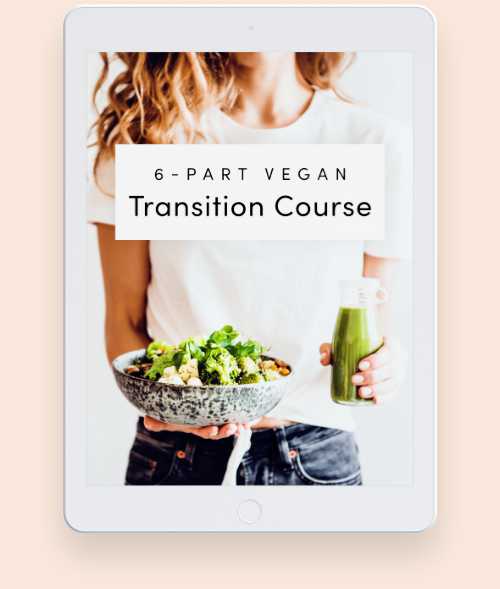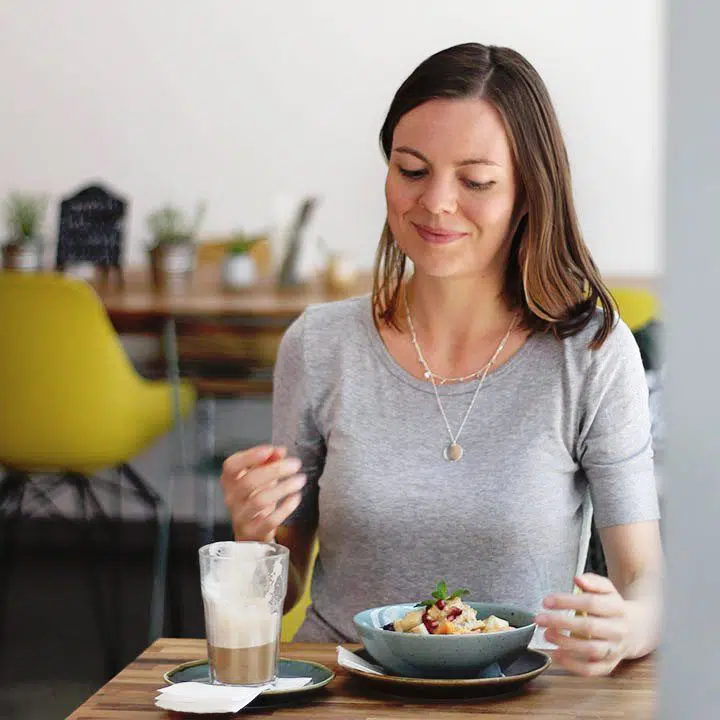Beef up your plant-based recipes with the help of TVP (textured vegetable protein)! Let’s take a closer look at this ingredient as well as its many benefits and uses.
If there’s one common concern about plant-based diets, it’s the perceived lack of protein. And the second most common one is the cost of such an eating pattern.
We’ve already talked about plant-based protein sources and being vegan on a budget before, but we wanted to put TVP into the spotlight separately. Because it’s just so awesome!

join our free vegan course!
Learn how to thrive on a plant-based diet with practical tips & a 3-day meal plan!
Why we love TVP
- Really inexpensive
- Versatile vegan alternative to meat
- Can be stored in bulk & at room temperature
- Great for muscle building
- Shelf-stable emergency food
- Gluten-free & nutritious
TVP comes in different sizes, from granules to strips, slices, curls and larger chunks, so you’ll be able to create many different recipes from it.
What is TVP made of?
TVP stands for “textured vegetable protein” and is usually made of defatted soy flour that’s been cooked under pressure.
It goes by a couple of different names, such as textured soy protein, soybean meat, soy curls or mince.
The most common food used to make TVP is soy. However, it can also contain corn, wheat, peas or oats!
Full Soy Guide →
TVP vs. soy curls
This guide aims to simplify the use of dehydrated vegetable protein and therefore uses the terms soy curls and TVP interchangeably.
Both products are similar to prepare and replace animal protein in the same ways.
However, soy curls are made from whole soybeans instead of defatted soy flour (TVP) and are therefore a “less processed” product.
Is TVP healthy?
TVP is low in calories, carbs and fat. One 55-calorie serving contains only 6 grams of carbs, 0.2 grams of fat and 9 grams of protein!
This makes it suitable for both low-fat and low-carb diets, depending on how you prepare your textured vegetable protein and what you serve it with.
It also offers essential nutrients, such as copper, folate, magnesium, thiamin and fiber. As long as you’re not allergic to soy, TVP is a great food!

How to cook with TVP
Since TVP is a dehydrated product, it requires the use of liquid to become edible. This typically means placing your crumbles or curls in a bowl and covering them with hot water or vegetable broth.
Depending on the size of your vegetable protein, you need to let it soak for 10-15 minutes. It will become softer and increase in size.
You can then use it for hearty stews, toppings, fillings or bake and fry it! Some recipes only call for rehydrating your soy curls, not cooking them.
What do soy curls taste like
Pure TVP or soy curls taste pretty neutral, a bit like tofu or grains. However, the secret is in the sauce and spices!
Soy meat is wonderfully versatile because it doesn’t taste like much on its own and can therefore soak up any flavors you want:
- Soy sauce
- Teriyaki
- Marinara
- Bouillon
- Maple + Vinegar
- BBQ Sauce
- Garlic + Herbs

How to use TVP
Many meaty recipes can be made vegan-friendly with the help of textured vegetable protein. Common uses include:
- Soy granules: bolognese, chili, bacon bits, taco filling, meatballs
- Strips or curls: chicken soup or tacos, shrimp, pulled “pork”, gyros, fajitas
- Chunks: vegan beef stew, schnitzel, chicken nuggets or fried chicken
Storage tips
Textured vegetable protein is a dehydrated product and doesn’t have to be refrigerated. You can keep it in an airtight container at room temperature for months and even years!
Once you’ve cooked and rehydrated it, keep your TVP for up to 5 days in the fridge or freeze it for up to 3 months.
Where to buy TVP & soy curls?
Nowadays, you can find TVP in most major grocery stores in the health food section. However, not every large store carries them, so don’t hesitate to ask and increase demand!
If you don’t have a local store that sells TVP, just look for it online, where you might even save a dollar or two. The larger the packs, the cheaper they usually get!
More food guides
- 25 Vegan Staple Foods
- 15 Healthy Food Swaps
- 25 Snacks to Buy at the Store
- Food Combining Tips
- 10 Healthy Fat Sources
Do you like cooking with TVP? Let us know in the comments below and don’t forget to Pin this article here!






 Alena Schowalter is a Certified Vegan Nutritionist who has been a vegetarian since childhood and vegan since 2012. Together with her husband, she founded nutriciously in 2015 and has been guiding thousands of people through different transition stages towards a healthy plant-based diet. She’s received training in the fields of nutrition, music therapy and social work. Alena enjoys discussions around vegan ethics, walks through nature and creating new recipes.
Alena Schowalter is a Certified Vegan Nutritionist who has been a vegetarian since childhood and vegan since 2012. Together with her husband, she founded nutriciously in 2015 and has been guiding thousands of people through different transition stages towards a healthy plant-based diet. She’s received training in the fields of nutrition, music therapy and social work. Alena enjoys discussions around vegan ethics, walks through nature and creating new recipes.
I try to avoid soy sources that are not organic, or at the very least GMO free. Do you know a source of TVP that is organic or GMO free?
Thx, KB
One of my favorite ways to eat TVP is to simply brown chunks or strips into a frying pan for a few minutes after rehydrating in chick’n broth, and then popping them straight into my mouth. So yummy!
Do you have any tips for keeping TVP firm and “meaty” in high-liquid recipes like sauces, soups, or stews? I squeeze my TVP like crazy after rehydrating and it works well in things like stir frys, but it turns to mush in “wet” meals.
Am I missing a step? Is there something else I can to do to the TVP before adding to these types of recipes to keep that meaty texture? I’ve tried frying it first but it still gets globby.